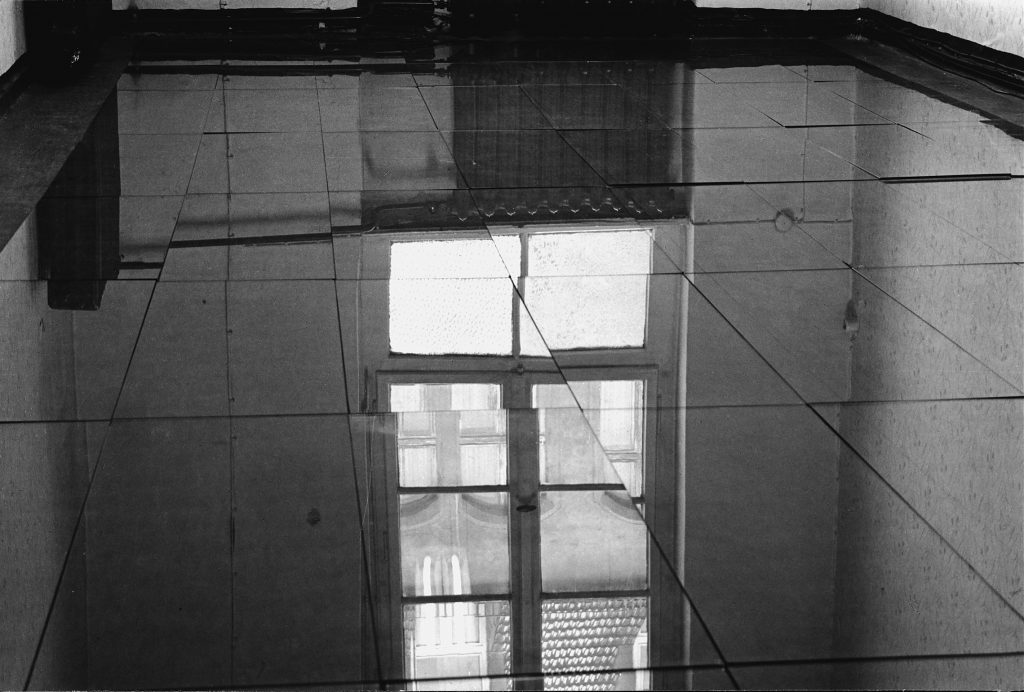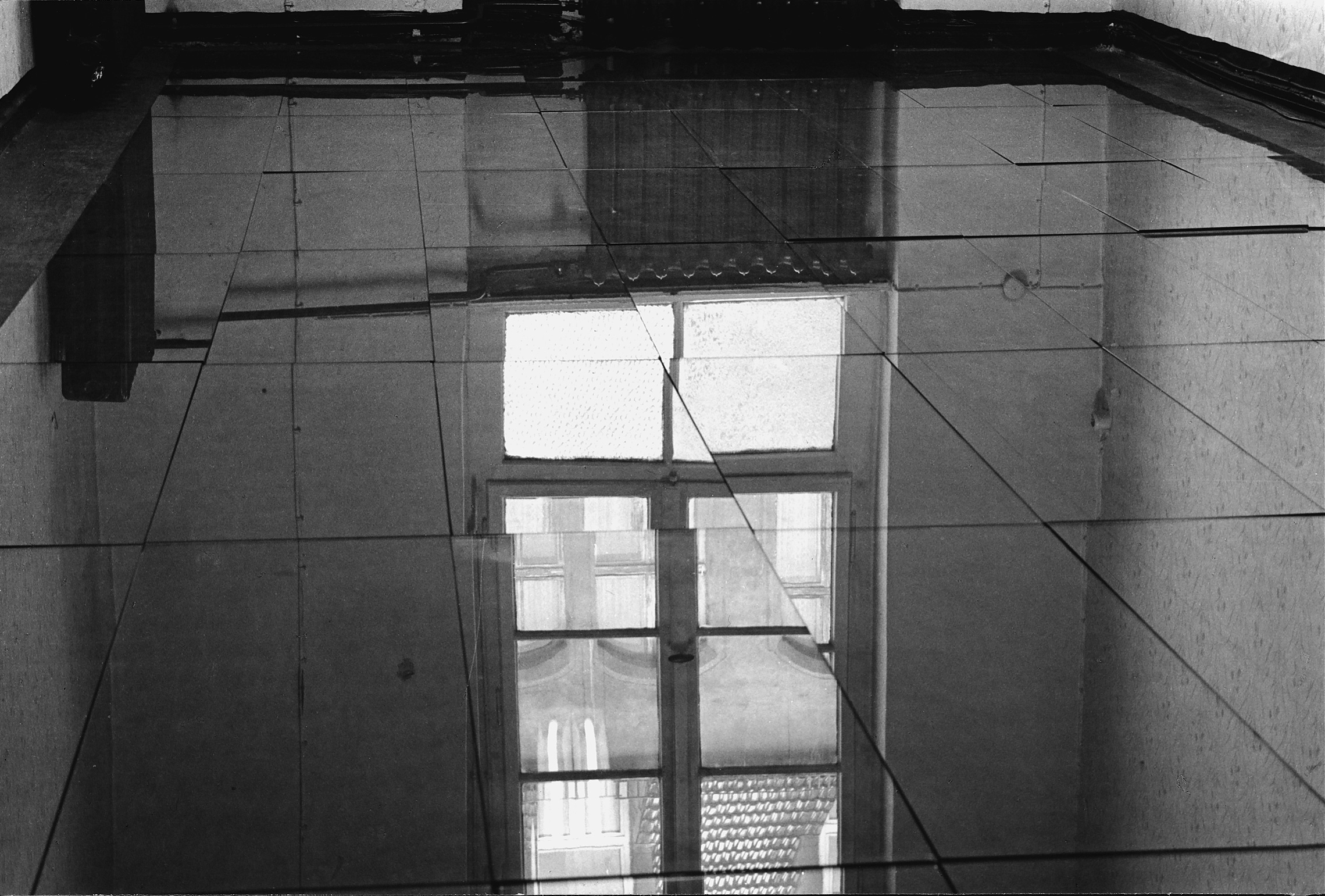räume

Hackesche Höfe Berlin 1992
installation glass / natural light
A year later, 1992: an installation in a room belonging to the “Hackeschen Höfen”, which at that time had not yet been renovated. The glass plates now lie closely together, directly on the floor thus forming a large area. This work is no longer a sculpture but now refers to the volume and surface of the given room as well as to the room’s exterior space. The glass reflects inner and outer space. Owing to the glass plates’ edges, the reflection is distorted and fragmented. The empty room invites the beholder to observe.
– Construction of space and time in the light of events – 1998
published in “de passage monique thomaes” vice versa verlag berlin 1998
translation by John Epstein
räume
Quiet strength and a highly charged emotional atmosphere are the predominant qualities which come to mind when regarding those works of Monique Thomaes which instigate the apprehension of space through examination and experience. Her sparing use of materials permits a minimal shift in the light intensity of a multi-layered process of self-reflection to activate the observer’s self-experience and to set free a grandiose quality of experience. However, the nervous system of the observer is not overly stimulated by this occurrence of the “event culture“; rather, what is increased is his abilities to feel in the manner of a cultivated and finely tuned sensibility.
In order to examine how the artist achieves this effect, an intense occupation with her procedure, which brings into the foreground complex concepts through an application of simple means, is required. At first it might appear to be a simple matter when, in 1992, the artist laid down on the floor of a room in the then still un-renovated “Hackesche Hšfe“ (a late nineteenth-century living and business complex located in the district of Berlin Mitte) plain, rectangular-cut glass plates; the effect, however, was astounding; yet it was not astounding only owing to the fact that the visitor was initially unsure as to whether he may walk into a room with such a floor covering.
The mirroring of the windowpanes on the floor depicted not only the light falling in through the wall’s outer opening, but also the window’s form as well as the constant transformation of reflection caused by the continuous increase and decrease of light intensity in the outer room, this latter being a process which usually is unnoticed because it occurs “un-reflected“. What is interesting here is that the observer can only become conscious of and discover such processes when he is willing to surrender himself to the act of observation for a good amount of time; the reason for such patience is that, as a rule, the changes are more likely take place – allowing for the fact that thunderstorms or similar dramatic weathers events are not happening – slowly and progressively.
– augen blenden – 1998
published in “de passage monique thomaes” vice versa verlag berlin 1998
translation by John Epstein
räume
A year later, 1992, Monique Thomaes constructed another installation in an at that time still not renovated room belonging to the “Hackesche Höfe”. The glass plates now lie closely together and directly on the floor thereby forming a large jointed area which allows only a narrow space of maneuverability about the room. This work no longer has any sculptural, corporeal character; rather, it now refers to the volume and surface of the given room as well as to the room’s exterior space. The supporting capacity of the architectural base is visually canceled out; the glass covered floor becomes the room’s picture/the picture’s room. It is both a sensitive substance and a mirroring surface. The glass reflects both inner and outer space: the ceiling, the radiator, the mullion and transom, the building on the opposite side of the street. Owing to the glass plates’ beveled edges, the reflection is distorted and broken up. The empty room invites one to peek in. It is illuminated by natural light changing according to whether conditions and the sun’s position during different times of the day and thereby permitting the reflection on the floor to wander. Time moves the transparency, almost as a photograph, or a moving image. It is simply that this supporting material, or rather the medium used in this room installation, has not the storage capacity of celluloid; therefore manipulation of the image is not possible …

